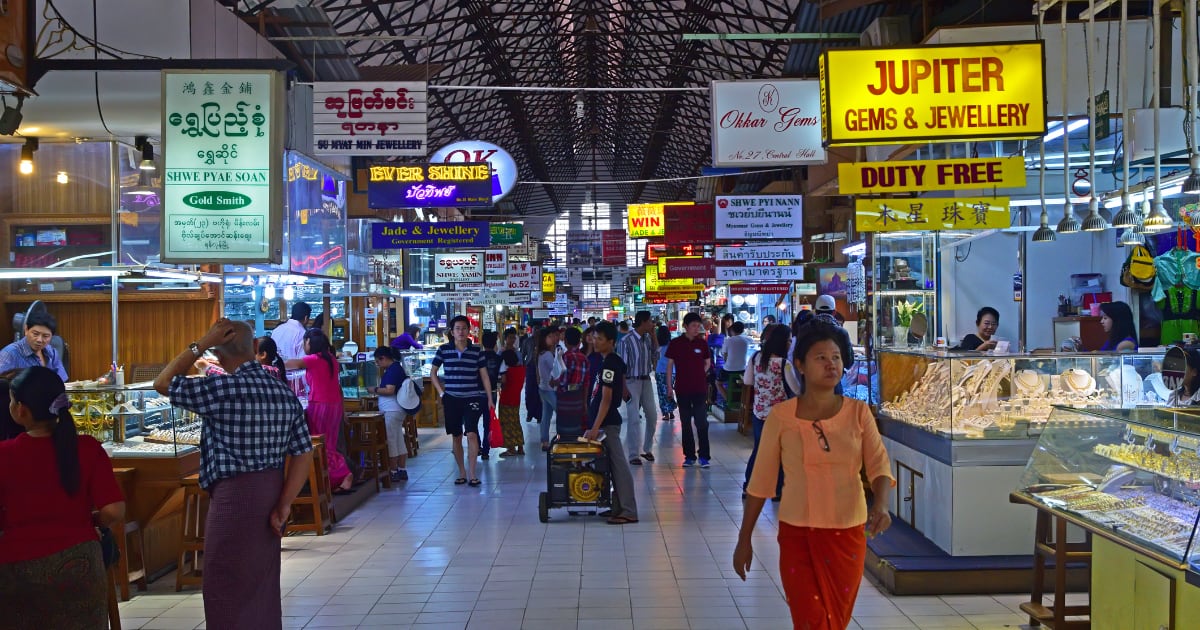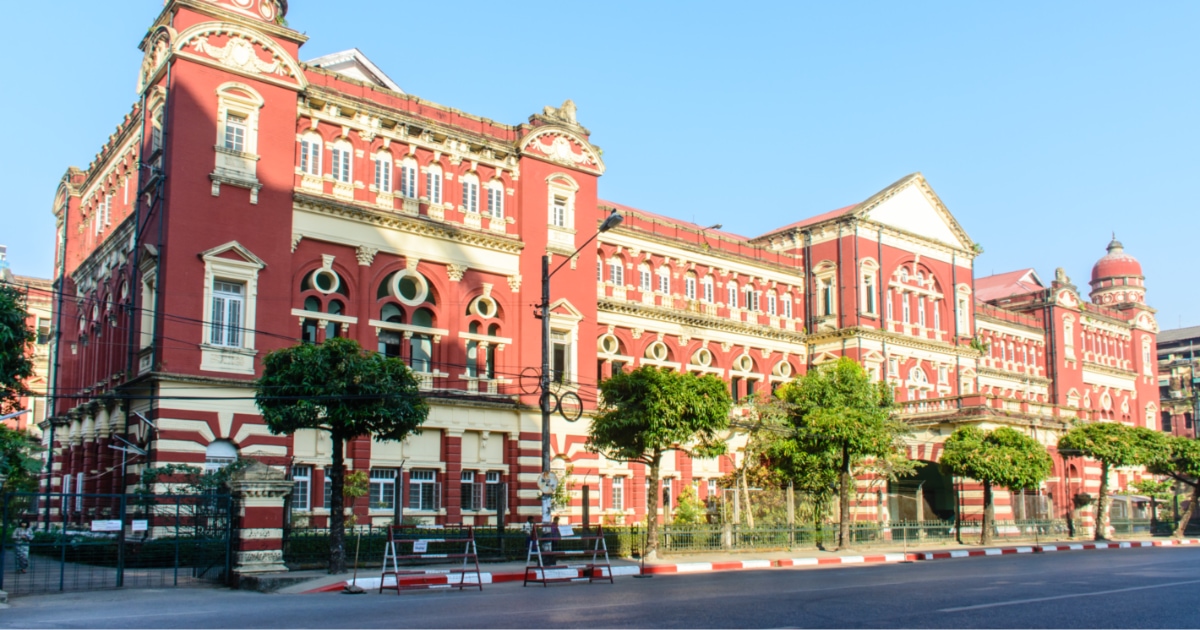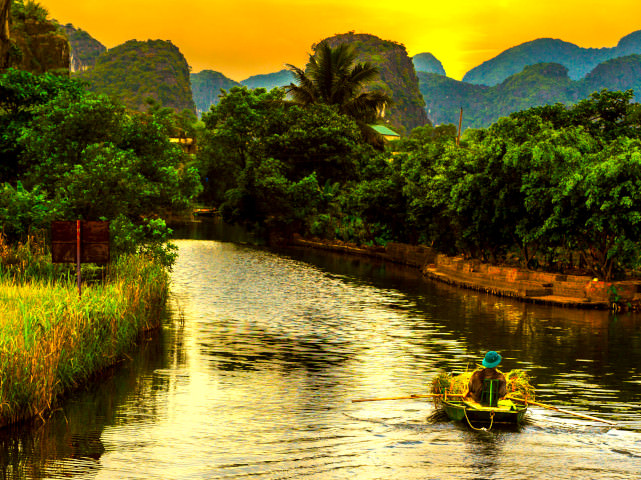
On 26 May 2020, the Industrial Zone Law was enacted by the Pyidaungsu Hluttaw, Myanmar’s highest legislature, aiming to promote industrialisation, create job opportunities through the establishment of industrial zones, attract foreign investment and increase the value of products based on domestic raw materials.
The Industrial Zone Law was first announced in August 2019, prior to which there was no specific legislation governing Industrial Zones in Myanmar. The introduction of the law contributes to the Government’s aim to increase the contribution of the industrial sector to GDP to 37% by 2030/2031, which as of 2018 comprised 32% of GDP and 18% in terms of employment.[1] As for 2020-21, it is estimated that industrials will contribute 33% to GDP.[2]
Comparatively, Myanmar relies heavily on agriculture, with the sector providing 49% of employment (69% in rural areas). However, agriculture’s contribution to overall GDP has reduced from 40% in 2010-2011 to 26% in 2018-2019 (estimated to be 24% as of 2020-2021).[3]
Development of the Industrial Sector in Myanmar
The industrial sector is of great importance to a country’s development, and it has played an important role in establishing sustainable economic conditions and tackling unemployment through the creation of more employment opportunities. In Myanmar, the industrial sector includes mining, energy, manufacturing and processing, electric power and construction.
In 1995, the Myanmar Government formed the Myanmar Industrial Development Committee (MIDC) under Notification No. 37/1995 and the MIDC established 18 industrial zones in nine states and regions. There was no systematic approach to the development of the industrial zones nor analysis of the feasibility of establishing industrial zones in specific areas due to a lack of rules, regulations and a specific industrial zone law at the time.
The MIDC was then renamed the Industrial Development Committee (IDC) in an initial step towards industrial development,[4] with the major role of the IDC being the promotion of green and clean industries through coordination with the Union of Myanmar Federation of Chamber of Commerce and Industry (UMFCCI) and the governmental supervision committees of the industrial zones.
To date there are around 60 industrial zones in Myanmar, 29 of which are in Yangon. There are also a number of Special Economic Zones (SEZs) of which are under development in the Rakhine State, Thanintharyi Region and in the Yangon Region. SEZs are governed by the Special Economic Zone Law, which was enacted in 2011.[5]
The Yangon Regional Government is working to upgrade industrial zones due to the current need for enhanced infrastructure which has resulted in low activity in the zones. As for industrial zones outwith Yangon, they tend to face difficulties in terms of accessible transport links to highways and railroads and with many zones developed in the 1990s and 2000s, a number have found attracting investment to be challenging and have struggled with development hurdles. This is in contrast to Myanmar’s SEs, which have secured significant institutional and financial support in order to develop the areas, with Thilawa SEZ attracting around US$1.5 billion in foreign investment as of early 2019. [6] The SEZ does however have better transport links with its own river port and the construction of the Bago River Bridge.
The Regional Government also have plans to create new industrial zones and have formed an Industrial Zone Management Committee to verify whether companies that have been granted land are utilising it, with the Committee prepared to reclaim land found to be in disuse. This is in contrast to previously, with regulations stating that land would be revoked if no business was done going unenforced and no action being taken, as according to U Ye Win Aung, secretary of the Mandalay Industrial Zone Management Committee. It is estimated that as of September 2019, 40% of industrial zone plots in Yangon were undeveloped, with only warehouses and fencing built.[7]
It is anticipated that enforcement will also enable information to be gathered on the types of business being done on the various plots of the industrial zones.[8]
Details of the New Industrial Zone Law
Objectives of the Industrial Zone Law
The objectives of the new law include:
- sustainable development of industrial business
- systematic establishment
- creation of competitive industrial business
- promotion of the operation of industrial business
- promotion of living standards of citizens
- promotion of economic growth of Myanmar
- creation of more employment opportunities
Definition of Industrial Zone and Monitoring of Industrial Zones
According to the new law, “industrial zone” is defined as land designated by the Union Government as an industrial zone by way of issuing a notification. All industrial zones, including new and old zones, will be monitored by the Regional Industrial Zones Development and Management Committee (the “Regional Committee”).
The Regional Committee shall submit the investment proposals, necessary policies, industrial development programmes, reporting and business prospects to the Industries and Industrial Zone Development Central Committee (the “Central Committee”) for approval.
Establishment of the Industrial Zone
In order to establish an industrial zone, a developer may submit the investment proposal and the following percentages of land use must be complied with at the time of establishment of the zone:
| Industrial Area | 60% to 70% |
| Commercial Area | 1% to 5% |
| Public Utilities and Assistant Area | 20% to 25% |
| Green Belt | 9% to 10%.[9] |
The Regional Committee shall submit a proposal specifying the size, type and level of industrial zone in accordance with the industrial policy for approval by the Central Committee.[10]
Duties and Rights of the Developer
The new law states that the developer must submit the investment proposal to the Central Committee through the Regional Committee.[11] After the business agreement has been executed with the Regional Committee, the developer may then implement the industrial zone business, sub-lease the land to investors and build infrastructure.[12]
A key duty of developers is that they must complete the work for each construction project within the respective industrial zone within the proposal period and if the reason for failing to accomplish the work is not a sufficiently compelling reason, the permit shall be revoked in accordance with the conditions of the permit.[13]
In terms of environmental conservation, workplace safety, health care and fire safety, regard shall be had to all relevant laws.[14]
As for matters relating to the Bonded Warehouse System within the Industrial Zone, they shall be carried out in accordance with the customs law and procedures.[15]
Investment Activities which may be carried out within the Industrial Zone
The new law stipulates that investors are entitled to carry out the following investment activities within the industrial zone:
- manufacturing of finished products, related products, packaging products and value-added products;
- transporting and delivering of raw materials and finished products,
- business relating to road maintenance and road upgrade;
- trading business of the products manufactured from investment business in accordance with the stipulations; and
- other services connected with investment business.[16]
Much like the conditions imposed on developers, the investor must complete the work for each construction project within the respective industrial zone within the proposal period and if the reason for failing to accomplish the work is not a sufficiently compelling reason, the permit shall be revoked in accordance with the conditions of the permit.[17]
Land Use Rights
The Developer or Investor may use industrial land to operate industrial, manufacturing or related businesses for up to 50 years with the possibility of two 10 year extensions upon approval by the Regional Committee.[1] This stipulation is similar to the right of an investor who obtains an MIC permit or endorsement under the Myanmar Investment Law (MIL) 2016.
In terms of the plots which are obtained within the established industrial zone, but are not used for business, the developer or investor must present the business project and estimated completion date within six months from the date specified to the Regional Committee in order to obtain the approval. If the project is not accomplished within the specified project period, a fine of 10% of the land value shall be payable to the relevant Regional Committee and if the payment of a fine is unfeasible, the land use permit or grant shall be revoked.[19]
Developers and investors are also permitted to carry out temporary importation of machines and equipment used for initial construction projects in line with the procedures outlined in the Sea Customs Act and the importation shall, with the approval of the Regional Committee, be coordinated with the Ministry of Commerce.[20]
Incentives for Industrial Zones
Developers and investors shall be entitled to the same income tax benefits as under the Myanmar Investment Law, which provides for the exemption from income tax for specified periods depending on the location of the zone.
The Central Committee may also provide special incentive periods for the following investment activities through issuing notifications:
- establishment of industrial zone in less developed regions and investments therein;
- investments which create many job opportunities in regions with lower employment rates;
- investments which are capable of exporting agricultural primary products as valued-added products;
- investments which manufacture qualified agricultural machines and equipment; and
- Export business of valued-added products and investments which manufacture with innovation.[21]
[1] https://www.pwc.com/mm/en/publications/assets/myanmar-business-guide.pdf
[2] https://www.pwc.com/mm/en/publications/assets/myanmar-business-guide.pdf
[3] https://www.pwc.com/mm/en/publications/assets/myanmar-business-guide.pdf
[4] https://www.ide.go.jp/library/English/Publish/Download/Brc/pdf/10_02.pdf
[5] https://www.icj.org/wp-content/uploads/2017/02/Myanmar-SEZ-assessment-Publications-Reports-Thematic-reports-2017-ENG.pdf
[6] https://www.mmtimes.com/news/industrial-zones-hampered-poor-infrastructure-demand-remains.html
[7] http://www.xinhuanet.com/english/2019-09/25/c_138422195.htm
[8] https://www.mmtimes.com/news/more-discipline-expected-after-passing-new-law-industrial-zones.html
[9] Section 15 of the Industrial Zone Law
[10] Section 16 of the Industrial Zone Law
[11] Section 23 (a) of the Industrial Zone Law
[12 Section 23 (b) of the Industrial Zone Law
[13] Section 23 (d) of the Industrial Zone Law
[14] Section 23 (g) of the Industrial Zone Law
[15] Section 23 (i) of the Industrial Zone Law
[16] Section 24 of the Industrial Zone Law
[17] Section 26 of the Industrial Zone Law
[18] Section 32 of the Industrial Zone Law
[19] Section 34 (b) of the Industrial Zone Law
[20] Section 45 of the Industrial Zone Law
[21] Section 46 of the Industrial Zone Law
Myanmar Enacts Industrial Zone Law
Development of the Industrial Sector in Myanmar
Details of the New Industrial Zone Law
Objectives of the Industrial Zone Law
Definition of Industrial Zone and Monitoring of Industrial Zones
Establishment of the Industrial Zone
Duties and Rights of the Developer
Investment Activities which may be carried out within the Industrial Zone
Land Use Rights
Incentives for Industrial Zones
This newsletter is for information purposes only. Its contents do not constitute legal advice and it should not be regarded as a substitute for detailed advice in individual cases.
Transmission of this information is not intended to create and receipt does not constitute a lawyer-client relationship between Charltons and the user or browser.
Charltons is not responsible for any third party content which can be accessed through the website.
If you do not wish to receive this newsletter please let us know by emailing us at unsubscribe@charltonslaw.com







